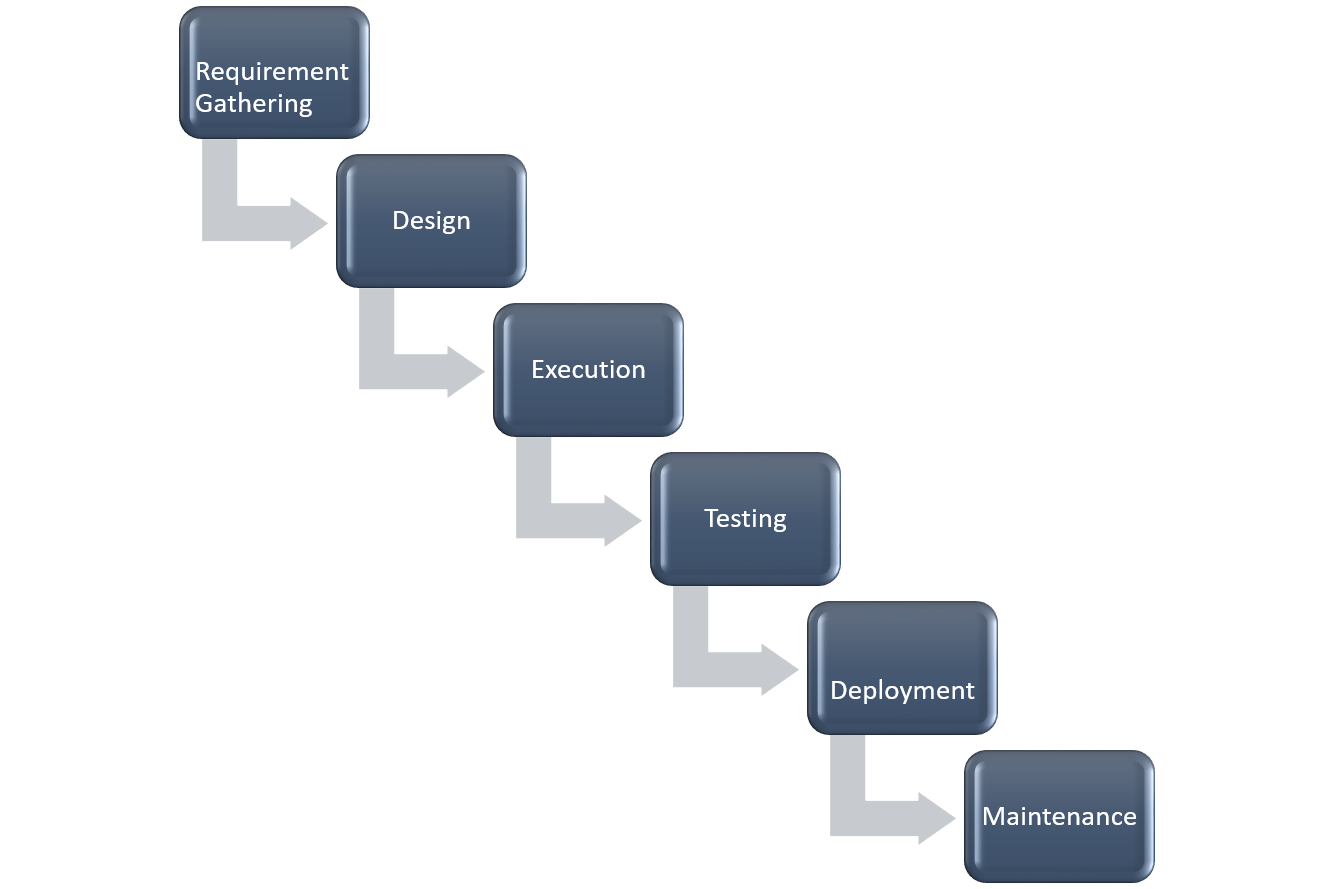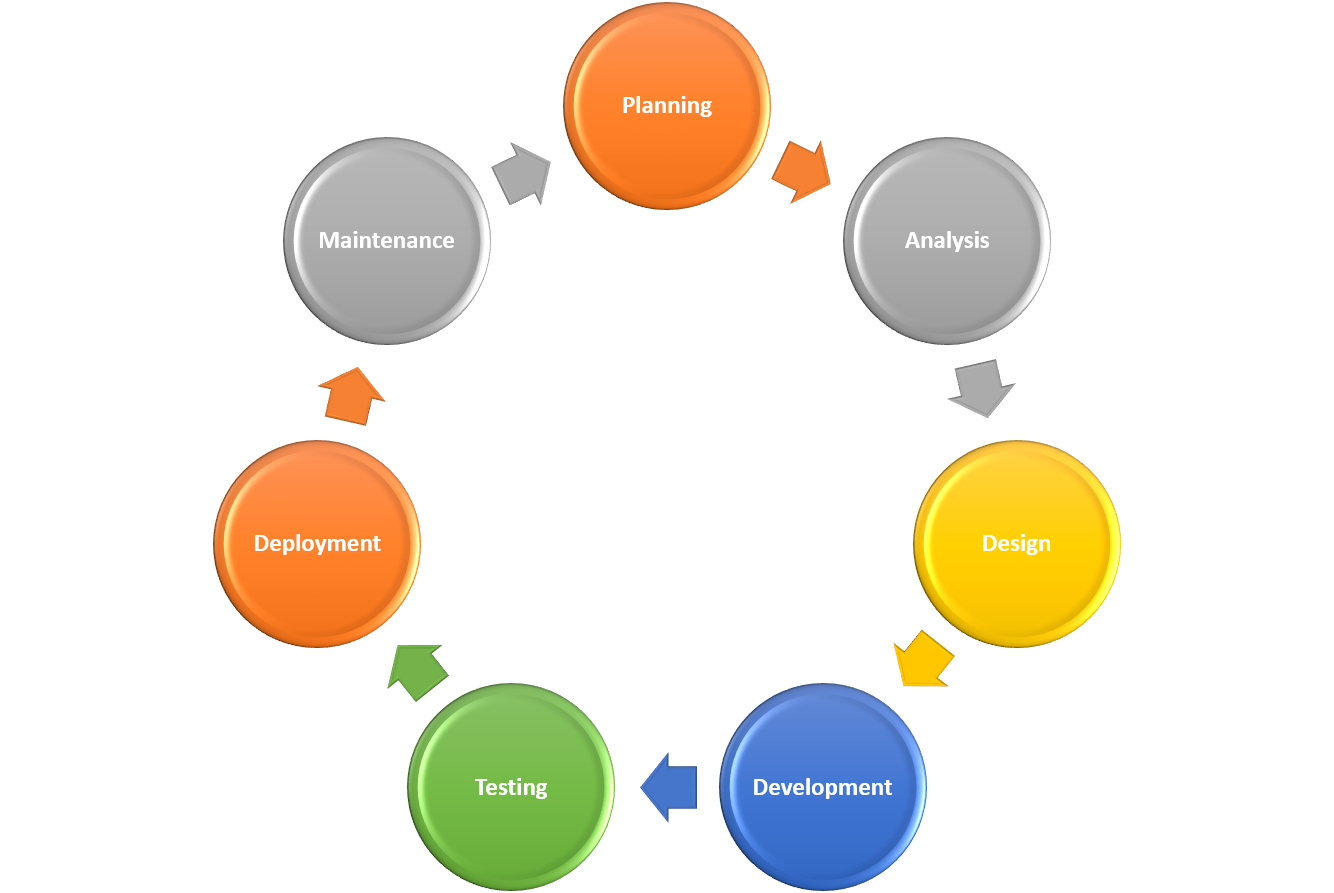Introduction
In the realm of project management, different methodologies are employed to ensure the successful completion of tasks, from software development to construction projects. One such methodology, the Waterfall model, has been a cornerstone of project management for decades. In this article, we will take a comprehensive look at the Waterfall methodology, exploring its origins, key principles, advantages, disadvantages, and best practices.
The Origins of Waterfall Methodology
Dr. Winston W. Royce conceived the Waterfall methodology in 1970, In his paper titled “Managing the Development of Large Software Systems.” Although it was initially developed for software engineering, the Waterfall model has since found applications in various industries, including construction, manufacturing, and even non-technical project management.
Key Principles of Waterfall Methodology.
=> Sequential Phases: The Waterfall methodology follows a linear and sequential approach, with each phase building upon the deliverables of the previous one. The essential stages usually encompass the collection of requirements, design, execution, testing, deployment, and maintenance.

=> Well-Defined Requirements: Detailed project requirements are gathered and documented at the outset. This step is critical to ensure that all stakeholders have a clear understanding of the project’s scope and goals.
=> Minimal Change: Once a phase is completed, changes to requirements are discouraged, as the Waterfall model assumes that alterations may lead to costly delays and disruptions.
=> Rigorous Testing: Thorough testing is conducted at the end of each phase to ensure that the project meets the predefined requirements and specifications.
=> Document-Driven: Extensive documentation is created throughout the project’s life cycle, providing a clear reference for future stages and post-project maintenance.
Advantages of Waterfall Methodology
=> Clarity and Structure: The sequential nature of the Waterfall model provides a clear project structure, making it easier for stakeholders to understand the project’s progression.
=> Detailed Planning: Well-defined requirements and detailed documentation help in comprehensive project planning, reducing the risk of misunderstandings and scope creep.
=> Quality Control: Rigorous testing at the end of each phase ensures that defects are identified and rectified early, leading to a high-quality final product.
=> Measurable Milestones: Milestones are well-defined, making it easier to track progress and manage the project’s timeline.
=> Customer Involvement: Customer involvement is typically required at the beginning and end of the project, ensuring that the final product aligns with their expectations.
Disadvantages of Waterfall Methodology
=> Limited Flexibility: The Waterfall model is less adaptable to changing requirements, making it less suitable for projects with evolving scopes or dynamic environments.
=> Lengthy Delivery Time: The linear progression of phases can lead to longer project delivery times, which may not be acceptable in today’s fast-paced business world.
=> No Prototyping: Waterfall doesn’t encourage the development of prototypes or early models, which can result in delivering a final product that doesn’t fully meet user needs.
=> Risk of Scope Creep: Because changes are discouraged after the requirements phase, there’s a risk of scope creep if the initial requirements were not thoroughly defined or if customer needs change during the project.
Best Practices for Waterfall Methodology
To make the most of the Waterfall methodology, consider the following best practices:
=> Thorough Requirements Analysis: Invest time and effort in gathering and documenting detailed requirements. A more thorough grasp at the outset leads to a more seamless project progression.
=> Clear Documentation: Maintain detailed documentation throughout the project. It will function as a point of reference for all team members and stakeholders. Manage Scope Changes Carefully: While scope changes should be minimized, sometimes they are necessary. When they occur, document the changes and their impact on the project meticulously.
=> Regular Reviews: Conduct regular reviews and assessments to identify issues and potential roadblocks early in the project.
=> Effective Communication: Foster open and transparent communication among all team members and stakeholders to ensure everyone is on the same page.
Conclusion
The Waterfall methodology, with its structured approach and emphasis on documentation and quality, can be a suitable choice for projects with well-defined and stable requirements. It has a long history of successful use in various industries, from software development to construction. However, it’s essential to recognize its limitations, particularly when dealing with projects that require flexibility, adaptability, or frequent changes.
By following best practices and understanding the pros and cons of the Waterfall methodology, project managers can make informed decisions on when and how to apply this approach. Ultimately, the choice of project management methodology should align with the specific needs and characteristics of the project at hand, ensuring a successful outcome and satisfied stakeholders.


